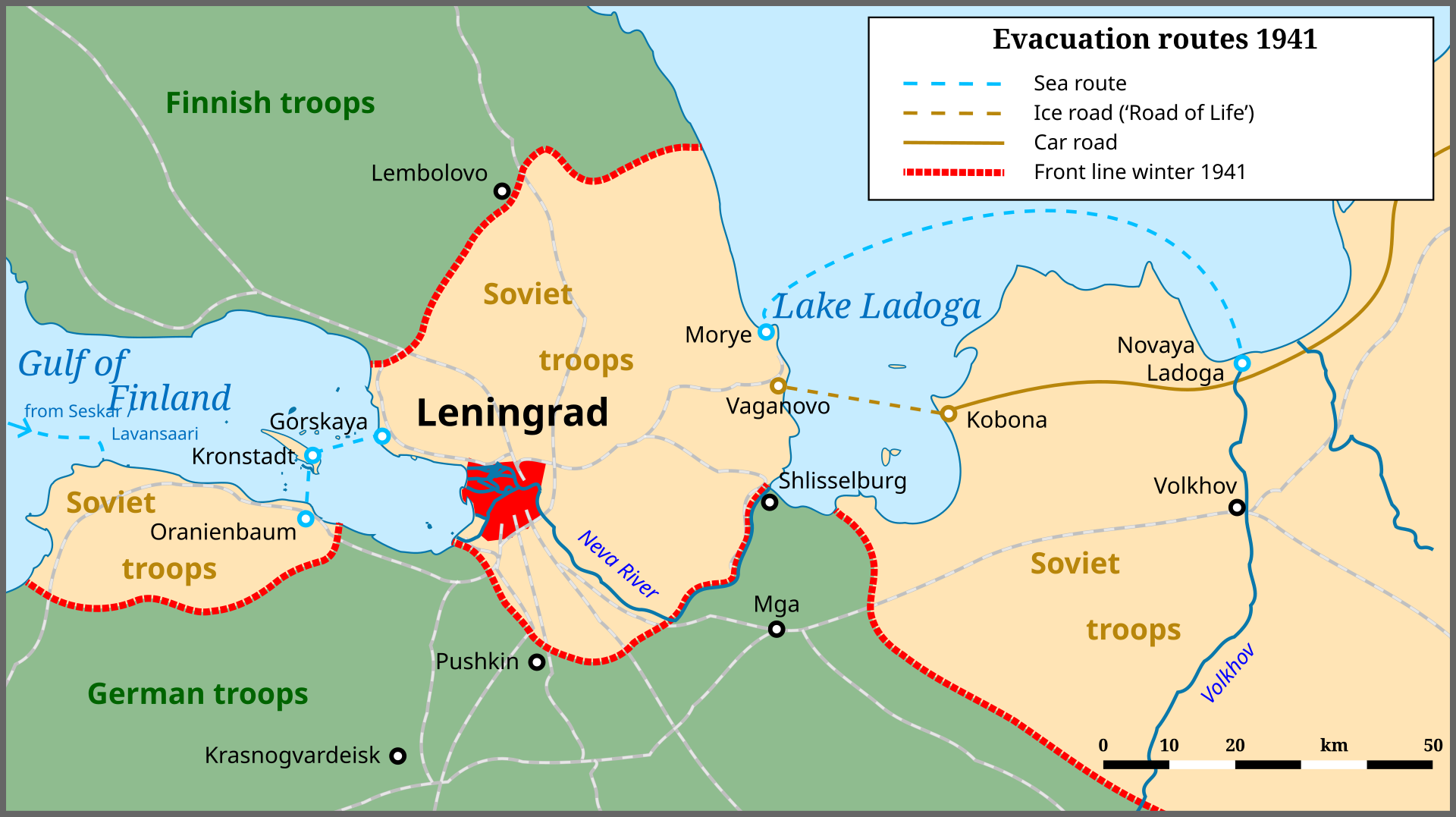For the Defence of Leningrad
Description and requirements of the medal
The Medal “For the Defence of Leningrad” was awarded to all participants in the defence of Leningrad:
- Service members of units, formations and institutions of the Red Army, Navy and NKVD troops who participated in the city’s defence.
- Workers, employees and other civilians who participated in military operations to defend the city, contributed to the defense of the city with their selfless work at enterprises, in institutions, participated in the construction of defensive structures, in air defense, in the protection of public utilities, in the fight against fires from enemy air raids, in the organisation and maintenance of transport and communications, in the organisation of public catering, supplies and cultural and everyday services for the population, in caring for the sick and wounded, in organising child care and other activities to defend the city.
The medal is made of brass. On the front side of the medal, against the backdrop of the visible outline of the Admiralty building, is a group of Red Army men, Red Navy men, and women workers with rifles at the ready. At the top of the medal is a five-pointed star and an inscription along the edge of the medal, “FOR THE DEFENCE OF LENINGRAD”. A convex rim borders the front side of the medal. On the back side of the medal is the inscription “FOR OUR SOVIET MOTHERLAND”. Above the inscription is a hammer and sickle. Initially, the ribbon was red with silver stripes along the edges, each 4 mm wide. By decree of June 19, 1943, a new ribbon was established – olive green with a longitudinal green stripe in the middle, 2 mm wide.
As of 1985, about 1.470.000 people were awarded the Medal “For the Defense of Leningrad”. Among them were 15 thousand children and teenagers who survived the siege.
About the Leningrad operation
From 1941 until 1944, the Axis powers besieged Leningrad (now Saint Petersburg) on the Eastern Front of World War II. After 872 days of siege, Germany and Finland never took Leningrad, the second largest city. The most catastrophic siege in history may have killed 1.5 million people. There is a rounding off in literature and on monuments — 900 days and nights. Soviet and Russian historiography made the “Leningrad blockade” one of the main pillars of the military history of the USSR, and this operation will forever remain fundamental to the pride of the Soviet and Russian people. I will indicate the general details of the operation, not forgetting to mention some essential details from historical sources, which, for some reason, Soviet and Russian historiography deliberately does not mention.

<…>
My medal
The “wide horizon” version. Ribbon and medal have some wearing signs. Purchased from Estonia.
